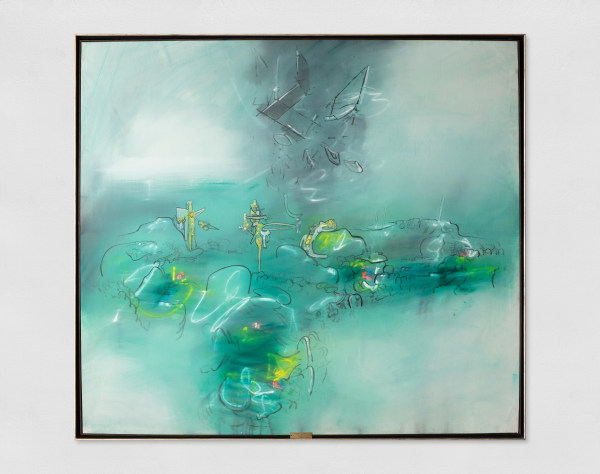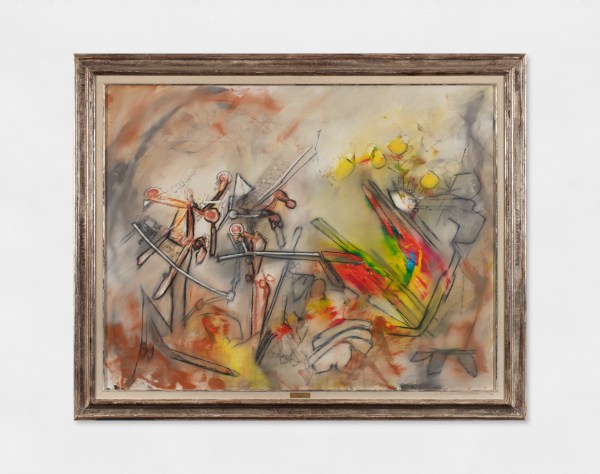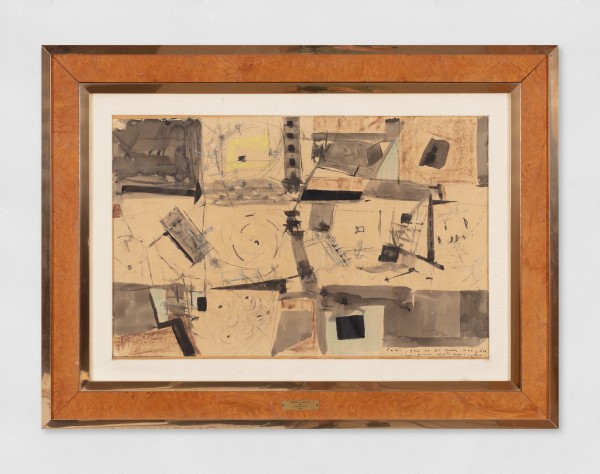-
Biography
Roberto Matta (Santiago, Chile 1911 - Civitavecchia, Italy 2002)
Born in Santiago in Chile in 1912, after graduating in architecture from the Catholic University in Santiago in 1931, Matta moved to Paris in 1933 to work for the architect and city planner Le Corbusier. While working in his studio, Matta became increasingly interested in painting, becoming friends with intellectuals and artists from all over Europe, including Gertrude Stein, Marcel Duchamp, Walter Gropius, Salvador Dalí, Federico Garcia Lorca, and André Breton.
Excited by the surrealist movement, Matta decided, in 1936, to abandon architecture for painting.
His art grew rapidly, and by the time he moved to New York City at twenty-eight, Matta already had a distinctive and visionary vocabulary of biomorphic forms swirling about in eerie and angst-ridden settings.
Throughout his artistic production, Matta combined the interest of surrealism in psychic automatisms with a preference for more figurative elements.
His work reflects the sense of disorientation and restlessness that contributed to the emergence of existentialism after the Second World War.
In the last years of his working life, political activism took up much of his energy.
1995, Matta received the Japan Art Association’s Praemium Imperiale prize for painting.
The artist died in Civitavecchia in 2002.
Copyright the artist. Photo UniCredit Group (Sebastiano Pellion di Persano)
-
Works
-
Exhibitions
Roberto Sebastian Matta Echaurren: Chilean, 1911-2002
A painter born in Chile who created mysterious and fantastic settings, identified with the surrealist movement.Join our mailing list
* denotes required fields
In order to respond to your enquiry, we will process the personal data you have supplied in accordance with our privacy policy.









